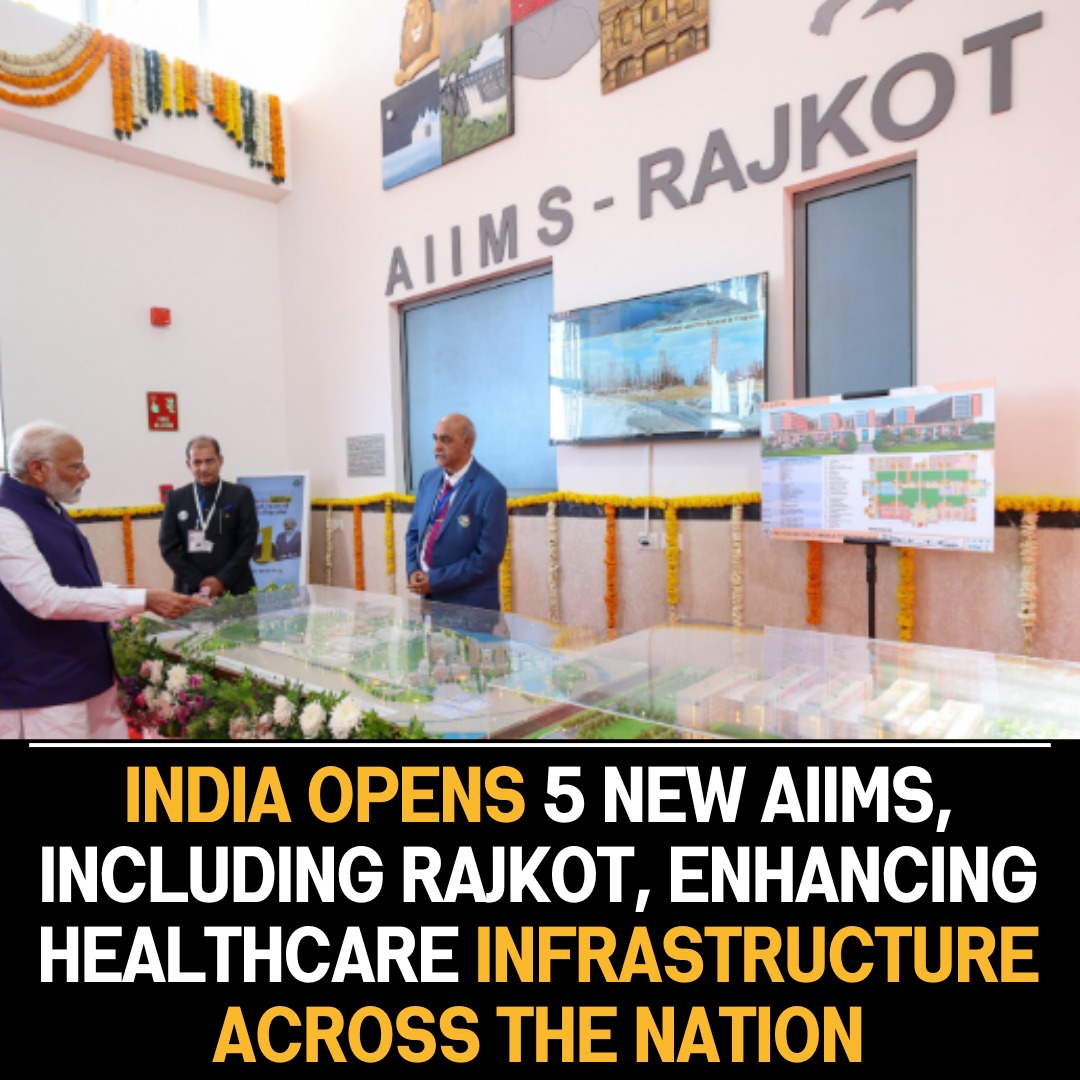In a momentous achievement for India’s healthcare sector, the nation recently celebrated the inauguration of five new All India Institutes of Medical Sciences (AIIMS) facilities. Among these, the newly established AIIMS in Rajkot stands out as a significant addition, marking a crucial step in bolstering the country’s healthcare infrastructure and expanding access to quality medical services.
The inauguration of these five AIIMS facilities reflects the government’s unwavering commitment to enhancing healthcare services across the nation. AIIMS institutions are renowned for their state-of-the-art medical facilities, world-class education, and cutting-edge research capabilities. The establishment of new AIIMS centers is a strategic move to address regional disparities in healthcare access and elevate medical facilities to international standards.
AIIMS Rajkot, in particular, holds immense importance as it is set to become a hub for medical excellence in the western region of India. The institute is equipped with modern medical technology, top-tier faculty, and comprehensive healthcare services. This development is poised to benefit not only the local population but also patients from neighboring areas who can now access advanced medical care closer to home.
The expansion of the AIIMS network is aligned with the broader vision of ensuring healthcare reaches every corner of the country. These institutes play a pivotal role in producing a skilled healthcare workforce, conducting groundbreaking research, and providing specialized medical services, contributing to the overall improvement of the healthcare landscape.
The inauguration of AIIMS facilities comes at a time when the global healthcare landscape is evolving, with a greater emphasis on advanced medical research, technology-driven healthcare delivery, and robust medical education. The new AIIMS centers are well-positioned to meet these evolving needs, fostering a culture of innovation and excellence in medical science.
Furthermore, the establishment of AIIMS institutions serves as a catalyst for regional development. It not only creates job opportunities but also attracts talent and investments to the surrounding areas. The ripple effect of such medical infrastructure development contributes to the overall socio-economic growth of the region.
The strategic placement of AIIMS facilities takes into account the geographical distribution of healthcare resources, ensuring that underserved regions receive the necessary attention and resources. This approach aligns with the government’s commitment to achieving universal healthcare and addressing healthcare disparities across the country.
In conclusion, the inauguration of five new AIIMS facilities, including AIIMS Rajkot, is a monumental milestone for India’s healthcare sector. It not only signifies a commitment to excellence in medical education, research, and healthcare delivery but also marks a significant step toward ensuring that quality healthcare is accessible to all citizens. The expansion of the AIIMS network reflects a visionary approach to building a robust and inclusive healthcare infrastructure that can meet the evolving healthcare needs of a growing and diverse population.









